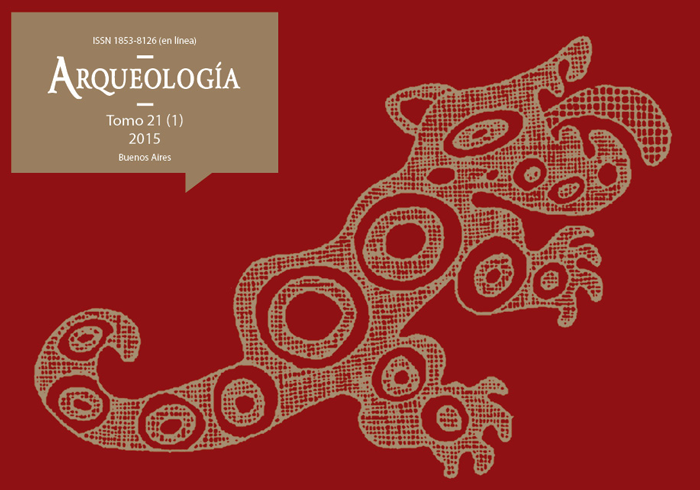Simetría y diferenciación espacial Los edificios de La Alumbrera. Antofagasta de la Sierra
Palabras clave:
Sintaxis espacial, Organización social, Linajes segmentarios
Resumen
Presentamos la metodología y los resultados de una nueva fase de análisis espaciales llevados a cabo en el asentamiento prehispánico La Alumbrera, ubicado a 3300 msnm en la Puna Catamarqueña de Antofagasta de la Sierra, y ocupado durante un extenso período entre los ca. 1000 y 1600 dC. En esta ocasión nos centramos sobre las agru-paciones de recintos unidos por circulación interna llamados edificios. Se procesaron dos tipos de información extraídos de la arquitectura arqueológica, por un lado las características sintácticas, referidas a la composición y ordenamiento interno de los edificios y los recintos que los componen y por otro, lo que denominamos caracterís-ticas semánticas, que se refieren a atributos como el tamaño, la forma y las técnicas constructivas. Los resultados revelaron la presencia de distintos tipos de edificios agru-pados dentro de siete categorías, a partir de los cuales se postula la presencia de una organización política con jerarquías descentralizadas basada en segmentos de linajes.Descargas
Cómo citar
Salminci, P. (1). Simetría y diferenciación espacial Los edificios de La Alumbrera. Antofagasta de la Sierra. Arqueología, 21(1), 89-114. https://doi.org/10.34096/arqueologia.t21.n1.1611
Sección
Artículos
Los autores/as que publiquen en esta revista aceptan las siguientes condiciones:
- Los autores/as conservan los derechos de autor y ceden a la revista el derecho de la primera publicación, con el trabajo registrado mediante Licencia Creative Commons 4.0 Internacional (CC-BY-NC-SA), que permite a terceros utilizar lo publicado siempre que mencionen la autoría del trabajo y a la primera publicación en esta revista.
- Los autores/as pueden realizar otros acuerdos contractuales independientes y adicionales para la distribución no exclusiva de la versión del artículo publicado en esta revista (p.e. incluirlo en un repositorio institucional o publicarlo en un libro) siempre que indiquen claramente que el trabajo se publicó por primera vez en esta revista.
- Se permite y recomienda a los autores/as a publicar su trabajo en Internet (p.e. en sus sitios web personales o en depósitos institucionales), tanto antes como después de su publicación en esta revista, siempre y cuando proporcionen información bibliográfica que acredite, si procede, su publicación en ella. De esta manera, pueden favorecerse intercambios productivos y a una mayor y más rápida difusión del trabajo publicado (vea The Effect of Open Access).





(1)13.png)






1.jpg)
1.png)
1.jpg)


13.png)
1.png)


(1)1.png)









